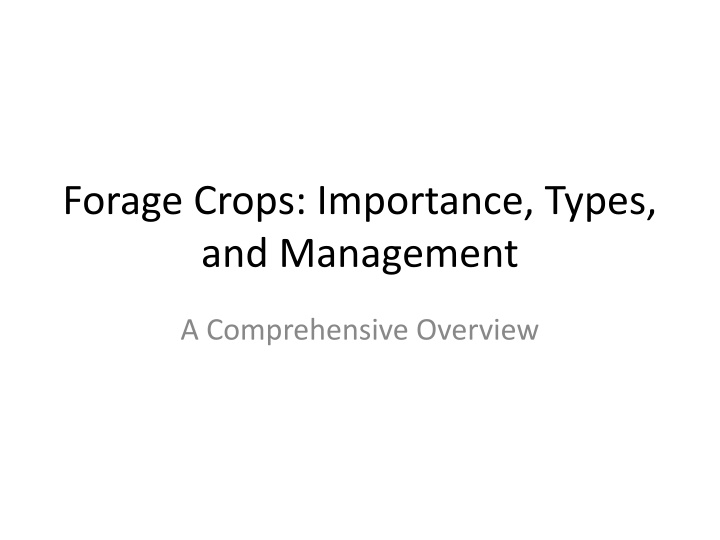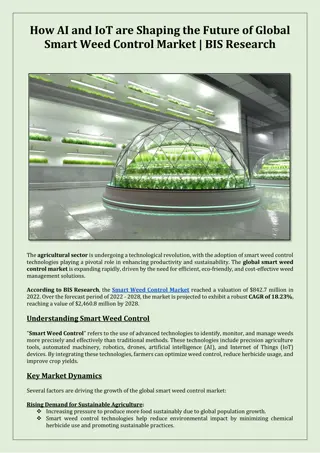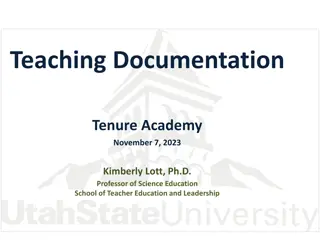
Forage Crops: Importance, Types, and Management Overview
Discover the significance of forage crops in agriculture and livestock production, their various types, growth habits, factors influencing their growth, management practices, challenges in production, future prospects, and sustainable innovations. Learn how forage crops provide essential nutrients, enhance soil fertility, prevent erosion, and serve as a sustainable feed source.
Download Presentation

Please find below an Image/Link to download the presentation.
The content on the website is provided AS IS for your information and personal use only. It may not be sold, licensed, or shared on other websites without obtaining consent from the author. If you encounter any issues during the download, it is possible that the publisher has removed the file from their server.
You are allowed to download the files provided on this website for personal or commercial use, subject to the condition that they are used lawfully. All files are the property of their respective owners.
The content on the website is provided AS IS for your information and personal use only. It may not be sold, licensed, or shared on other websites without obtaining consent from the author.
E N D
Presentation Transcript
Forage Crops: Importance, Types, and Management A Comprehensive Overview
Introduction - Definition of forage crops - Importance in agriculture and livestock production - Role in soil conservation and sustainability
Importance of Forage Crops - Provide essential nutrients for livestock - Enhance soil fertility through nitrogen fixation - Prevent soil erosion and improve soil structure - Serve as a sustainable feed source
Types of Forage Crops 1. Leguminous: Alfalfa, Clover, Vetch, Peas (High in protein, nitrogen fixation) 2. Non-Leguminous: Ryegrass, Timothy, Sudan grass (High biomass production)
Classification Based on Growth Habit - Annual Forage Crops: Sorghum, Maize, Oats - Perennial Forage Crops: Alfalfa, Bermuda grass, Fescue
Factors Affecting Forage Crop Growth - Soil type and fertility - Climate conditions - Seeding rates and spacing - Cutting frequency and harvest timing
Management Practices for Forage Crops 1. Soil Preparation 2. Seeding Methods 3. Irrigation and Fertilization 4. Weed and Pest Control 5. Harvesting Techniques
Challenges in Forage Crop Production - Drought and climate change - Soil degradation - Pest and disease pressures - Economic constraints
Future Prospects and Innovations - Drought-resistant varieties - Improved fertilization techniques - Precision agriculture - Sustainable grazing systems
Conclusion - Summary of forage crop importance - Need for sustainable management - Future opportunities
References - Key scientific sources and textbooks on forage crops





















